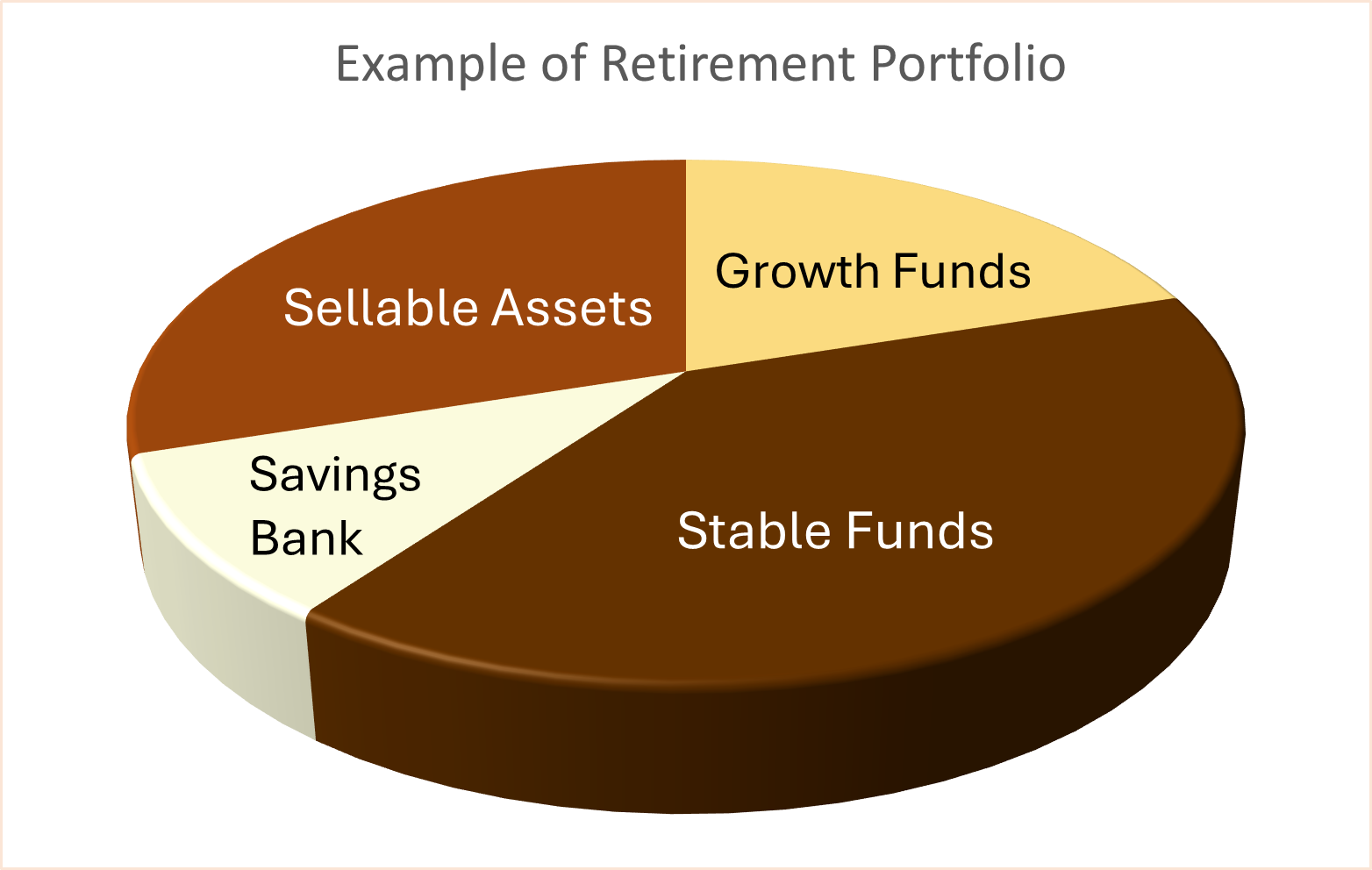
Inflation is a term we hear often, especially when the prices of goods and services seem to creep upward over time or the size of a commodity gets smaller for the same price. But what exactly is inflation, and how can we protect our retirement savings from its effects? To build a strong retirement plan, it's crucial to understand how inflation works, what constant dollars mean, and the strategies you can employ to safeguard your hard-earned savings.
How Inflation Works
Inflation refers to the general rise in prices over time, which reduces the purchasing power of money. In simpler terms, the dollar in your pocket today won’t buy as much in the future as it does now.
One of the causes of inflation is the imbalance between supply and demand in an economy, often fueled by factors like increasing costs of production, labor, and demand for goods.
Economists generally distinguish between two types of inflation:
- Demand-pull inflation occurs when the demand for goods and services exceeds supply, driving prices higher.
- Cost-push inflation happens when the cost of producing goods increases, prompting businesses to raise prices to maintain profit margins.
Both forms lead to the same outcome: your money becomes less valuable over time. Inflation is often measured using the Consumer Price Index (CPI), which tracks the price changes in a basket of commonly used goods and services, like cereal, lumber, toothpaste, medical costs.
The Concept of Constant Dollar

The term “constant dollar” refers to the value of money after adjusting for inflation. It helps compare the purchasing power of money over different periods. For example, if you earned $50,000 in 2024, with an average inflation per year of 3%, in ten years, that same $50k would only have the buying power of $38, 321. So that same income, only has 76% of the purchasing value it did ten years prior.
In coffee terms, a $5 cup of coffee today, could be $10 in the future for the same size.
In retirement planning, understanding constant dollars is essential. It prevents you from overestimating the value of your savings and helps create a more realistic financial plan.
Inflation and Retirement: The Silent Erosion of Savings

Inflation can significantly impact your retirement if you don’t take it into account. Let’s say you have $500,000 in retirement savings today. Assuming an average inflation rate of 3% per year, the value of your money will halve in about 24 years. This means that by the time you're in the middle of your retirement, your savings will buy far fewer goods and services than it did initially, making it difficult to live comfortably.
Additionally, healthcare costs, a significant expense during retirement, tend to rise faster than the general inflation rate, potentially putting retirees at financial risk.
Insulating Your Retirement Savings from Inflation

Inflation doesn’t have to derail your retirement plans. With the right strategies, you can protect your savings from its long-term effects.

Practical Actions You Can Take
- Reevaluate Your Financial Plan Regularly: Inflation rates can fluctuate, so it’s important to reassess your retirement plan every few years. Make sure your investment mix is still appropriate for your goals and consider any inflationary trends that could affect your long-term purchasing power.
- Create a Budget with Inflation in Mind: Factor in an average inflation rate of 2-3% when budgeting for retirement. This can help you avoid surprises and ensure your savings last.
- Monitor Healthcare Costs: Since healthcare inflation outpaces general inflation, you should factor in rising medical costs when planning for retirement. Consider long-term care insurance or creating a dedicated healthcare fund.
- Stay Informed:
Keep an eye on inflation trends and consider working with a financial advisor to adjust your strategy as necessary.

Conclusion
Inflation may be inevitable, but its impact on your retirement doesn’t have to be devastating. By understanding how inflation works, adjusting your retirement strategy with constant dollars in mind, and taking proactive steps like investing in inflation-protected assets, you can safeguard your retirement savings and maintain financial security well into your golden years.
Contact Us
Check the background of your financial professional on FINRA's BrokerCheck.
The content is developed from sources believed to be providing accurate information. The information in this material is not intended as tax or legal advice. Please consult legal or tax professionals for specific information regarding your individual situation. Some of this material was developed and produced by FMG Suite to provide information on a topic that may be of interest. FMG Suite is not affiliated with the named representative, broker - dealer, state - or SEC - registered investment advisory firm. The opinions expressed and material provided are for general information, and should not be considered a solicitation for the purchase or sale of any security.
We take protecting your data and privacy very seriously. As of January 1, 2020 the California Consumer Privacy Act (CCPA) suggests the following link as an extra measure to safeguard your data: Do not sell my personal information.
Financial Professionals associated with this site are registered to conduct securities business and licensed to conduct insurance business in certain states. Response to, or contact with, residents of other states will be made only upon compliance with applicable licensing and registration requirements. The information in this website is for U.S. residents only and does not constitute an offer to sell, or a solicitation of an offer to purchase brokerage services to persons outside of the United States.
Securities and investment advisory services offered through NEXT Financial Group, Inc., Member FINRA/SIPC. T Wyman & Associates & Wyman Financial Solutions are not affiliated with NEXT Financial Group, Inc.
All Rights Reserved | Wyman Financial Group
Privacy Policy | Terms of Use | Powered by Levitate
